Published by Jeremy. Last Updated on August 7, 2022.
Disclaimers: Our site uses demographic data, email opt-ins, display advertising, and affiliate links. Please check out our Terms and Conditions for more information. Listed prices and attraction details may have changed since our visit and initial publication.
It is a sad day in the world of social media and social media advertising when brand credibility and effectiveness is measured by the number of followers you have and not the type of niche website content you publish and who it is going to.
This phenomenon is especially true on Instagram because the service is so locked down that you really can only measure two things when sharing your account: the number of followers you have and the number of likes you receive on any given photo (which is highly dependent on the amount of followers you have in the first place).
In not being able to effectively measure who makes up your blog traffic, there is a veritable arms race to get more Instagram followers and likes at any cost.
For many years we stayed away from Instagram for reasons similar to this, but it wasn’t until we really put social media as a primary focus with our sites that we decided to open an account. That was in 2013, and over the subsequent year-and-a-half we grew to a decently sized 1,800 followers with a long period of stagnated growth. We knew we had to take a step back and find out what we were missing, and a test for our Blog Your Trip series was born.
✈️ Book Your Next Trip
- • Planning a trip? Find a flight deal.
- • In need of a room? Check out hotel and apartment prices.
- • Taking a cruise? Find a cruise itinerary for your journey.
- • Don't overlook picking up a rental car or day tours as well!
Gaining Instagram Followers and Likes on Three Accounts
Although the primary focus of our digital marketing comes through this site, we actually run several blogs such that we decided to put together a test using a few of our Instagram accounts to track a wider set of data.
We decided on using three accounts for this test- each with roughly the same beginning followers (650-1,800) and all with a travel focus. The first was for this site, Living the Dream, focusing on global travel. The second was for our niche site focusing on the city of Pittsburgh, Discover the Burgh. The third was a dummy travel page we made just to mess around with on Instagram- also exclusively featuring travel photos but without any general branding associating it with any blog we run.
Our test plan for the accounts was as follows:
Account #1 – Living the Dream – Mimicking a passive Instagram user
This account was set to proceed as we always have. One or two Instagram update(s) per day (possibly missing a few here or there), with images in themed batches (most of the time, at least), set tags added as a comment, geolocation (when available), and little to no engagement with other users.
This account was set to monitor baseline growth for people who upload photos to Instagram and do nothing else other than promoting it on their website. Between uploading photos and promoting our account via buttons on our site and an Instagram widget in our post footer (reaching 40,000 people per month), we let it grow naturally to see what would happen.
Considering Living the Dream’s Instagram account wasn’t growing for months with the exact same method, we didn’t expect much.
Account #2 – Discover the Burgh – Mimicking a passionate Instagram user
This account had an update pattern exactly the same as Living the Dream (above) but included roughly 30 to 60 minutes per day of interacting with other users with accounts focused on and/or interested in our city. This was anything from simply liking photos to commenting, but did not include following any user unless they had absolutely perfect accounts that we would like to see in our feed (a very low percentage). When we did comment, we put real comments and not a thumbs up, smiley face, or one word response like most do who try and game the system via this method.
It is worth noting that this account was only focused on one city, Pittsburgh, and not general travel, so we expected our organic growth to be higher as a result of our niche (as unlike Living the Dream, we actually had growth in a passive updating style). So the goal of this test was to see if we could improve upon our baseline as a result of proactive user targeting.
Account #3 – Dummy Account – Mimicking a scheming Instagram user
Note: As of early 2018 Instagram is going after users who employ some of the following tactics, such as rapid follow or follow/unfollow. Instagram users should proceed with caution.
This account was promoted using every trick that is generally considered to be in poor form but stops just short of anything explicitly against Instagram’s terms of service (so no buying followers or using automation software). Before starting this test, growth on this account was also stagnant like Living the Dream, so there was significant room for improvement.
We published similar images to account #1, but increased our posting frequency to three photos per day without fail. Our tags and descriptions were less relative to the image and more to target large user concentrations (such as the tags #love or #like4like). Finally, we spent roughly 60 to 120 minutes per day following and unfollowing accounts in our similar niche with very little engagement otherwise (no liking or commenting on their photos as in account #2). For the first two weeks of the study we maintained our following/unfollowing rate at roughly one-to-one every day, but altered some of our parameters for the remaining two weeks that we’ll discuss below.
From there we let the test run its course over the one month period. One general travel account doing nothing but uploading images (mimicking a passive Instagram user). One niche travel account poised to perform better anyway with the added benefit of interacting with targeted users (mimicking a passionate Instagram user). And one general travel account doing just about every shady tactic you can think of that has been published on Instagram, but stopping just short of breaking any official rules (mimicking a scheming/shady Instagram user).
How’d the accounts turn out after one month?
The Results Are Not Surprising
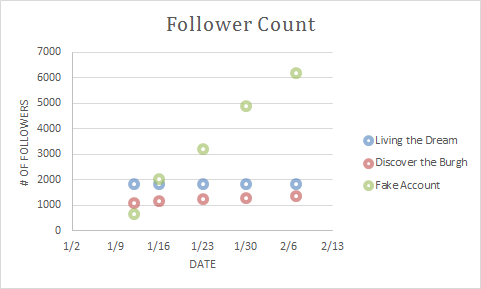
If you haven’t figured out from the screen caps above, the results are pretty much as you would expect.
Living the Dream’s follower rate was relatively flat throughout the entire study, with a total gain of 13 followers for the month. Although we appeared to pick up 10-20 new followers each and every day, the vast majority would quickly unfollow us- likely because they were either spam accounts or they were following in hopes of immediate follow-backs.
Discover the Burgh’s account grew at a nice pace, roughly 292 fans over the course of a month, mostly because we are leaders in our focused niche to begin with. We did notice an uptick in new followers who we were engaging with on the order of about one-in-five. Unfortunately, I wouldn’t a 20% success rate a great use of time by any means. (For more on this, read our further notes below).
The account that pursued shady techniques on Instagram grew at an unprecedented pace both in terms of followers but also engagement, to the tune of 5,523 fans over the month. This technique worked so well that in just the first week of running the test we gained over 2,000 real, niche-specific followers with only about 10 hours of work on our part. Considering this very same account only grew to 600 followers in a year of passive updating like we did on our Living the Dream account before starting this test, with a long period of nothing happening, the difference is striking.
We Stopped This Test Earlier Than Planned
Originally I was going to let this test run a lot longer and try and generate an account with tens of thousands of followers, but I have decided against that for now mostly to save my sanity even though I know I could’ve achieved that easily on our non-branded account. As such, we decided to change a few things for that account mid-study to test a few different ideas we came up with along the way.
The first thing is that by the week of January 23rd (week #3) we decided to stop unfollowing accounts on our fake account. We let our following then grow from about 3,500 to just under 7,000 over the course of the week. This was achieved in roughly the same amount of time we spent in weeks #1 and #2. Had I counted the number of accounts we followed / unfollowed the first two weeks, I suspect the numbers would be similar at following and unfollowing roughly 3,500 accounts each week. During this week our account grew by 1,686 followers, more than the previous two weeks, with a significant percentage of that being organic followers that we did not follow ourselves.
On the week of January 31st (week #4) we followed absolutely zero new accounts on the non-branded page, mostly due to the fact that we were traveling and didn’t have time to do anything but upload our standard three photos (this is also one of the reasons we decided to max our users out in week #3). Even with this reduction in work, we picked up 1,310 new fans simply because were that much bigger to begin with (while Living the Dream picked up a grand total of 6). Over 95% of these new followers were real users who we had not engaged with previously.
Considering we were getting roughly 230 likes per image on our dummy account, and 60 likes per image on Living the Dream that week, I can safely say that something was going on within Instagram’s algorithm that allowed us to reach a new audience- purely because our images were that much more popular than they were when we started this study.
When it comes down to it, that is probably the most impressive thing we found in this test. No matter how good your photos are, or how targeted your niche is, having a larger following will likely help you grow faster than having a smaller one.
This is something that most big users fail to point out when giving advice. When they say use good Instagram travel hashtags to be visible, they mean it, but they’re going to be better at it than you because their huge following helps them get into the Top 9 easier. When they say to use geolocation, they mean it, but their images get enough likes to begin with such that they’ll have better luck getting into the Top 9 there too. Pick any subset of Instagram, and odds are good that being popular to begin with is only going to make your visibility improve in the future, and good hash-tags and geolocation alone simply won’t cut it.
Although in the world of social media and complex display algorithms that are tailored towards already popular content, I’m not surprised by that in the least. Once you get your base audience and get them engaged, they will take you where you need to be.
Key Lessons Learned from This Test
During the course of this test we also picked up a few pieces of valuable information that are worth sharing in addition to our major observations above. These shouldn’t be taken as hard truths, but are rather observations we noticed as being somewhat consistent throughout this test.
The growth on our generic account did come with some learning curves, most notably that excessive following on Instagram will leave you temporarily blocked for a period of roughly 24 hours. This happened after we followed approximately 600 accounts in an hour long period, a number far greater than anything we’ve seen published before as being possible. However, when we split up that following to multiple sessions in a 12-hour period, we never once got flagged.
We also noticed that the rate at which you’re allowed to unfollow accounts on Instagram is also regulated; however, it was only after unfollowing several hundred accounts (I’d estimate closer to the 300-400 range) in one sitting that we would be prevented from unfollowing any more accounts. The blocking restriction here also only seemed to last for ten to fifteen minutes, without any pop-up warnings, and was not a full day like the following limit.
We also noticed that if you are going to target other users to follow in hopes of a follow back, it was best to follow people who are currently adding to their following list. (There is no sense in wasting a follow on someone who isn’t following anyone new, right?) We found these users by looking at other account’s recent followers, and liking them in hopes they’d like us back. We also noticed that users in our niche who had 2,000 to 5,000 followers had the most fans that we could visibly tell were interested in our content (either per their user name, profile photo, or display name), giving us the best return on our time investment. Once you got past that, the more popular accounts with 10,000, 50,000, or 100,000 fans had too many followers that appeared to be random users that it didn’t make sense to target.
We also got called out for our method a few times over the course of the study, and also had one person accuse us of stealing photos from our Living the Dream account (I was happy to see someone recognized our photography at least, and proceeded to tell them what we were doing on Twitter). To those we offended, sorry- it was nothing personal! This is why we also conducted this test on a non-branded account versus one we actually cared about. In fact, one of the reasons I cut the study down to just one month after the first one happened was because this bothered me so much.
On the niche website front, we did notice an increase from our engagement technique over what we would have otherwise received as a passive user (as we were prior to starting this test). As determining this was based on visual recognition of accounts we interacted with, summarizing the results is difficult. Overall, I’d put the engagement method of liking and commenting on others’ photos at a 20-30% success rate, and we may be being very generous here with that as some days it may have been as low as 10%. So if you’re hoping to get 50,000 fans through this method, thoroughly expect to have to engage 150,000 to 250,000 users- or around 500 users per day over the course of a year, and that is you have a very interesting niche account. Overall, I’m not convinced this method works enough to make it worth pursuing as a growth tactic.
Finally, my index finger really hurt from the repetitive tapping on my phone, which is another reason why I stopped this study much earlier than I originally planned. I’m not even joking about this one.
Is it Worth the Risk?
Overall, I’m not surprised that the following / unfollowing technique won this test handily. I’ve known bloggers that have been doing this for years, whether they admit it or not, and often suspect that many popular bloggers who boast the more legit techniques to gain followers only move into those after gaining an appreciable following using these less-than-positive methods. (Actually, I shouldn’t speculate. I know this to be true.)
After all, growing a new account is difficult even if you post great photos and use honest methods touted by the best of the best. Once you are bigger organic growth in the social world is much easier, which we definitely saw in our dummy account. So while the power users of Instagram may be right in their recommendations, keep in mind they also are giving tips on what works for accounts with 50,000, 100,000, or more fans. They’ve already passed the point where good organic growth takes over, and small users may not benefit from the tips at all.
When it comes down to it, odds are good that power Instagram users could stop everything they are doing, only post photos with no hash-tags, and they’d still grow just as much as they are right now. They could probably stop posting photos altogether and still grow just as easily, although likely at a reduced rate. For what it is worth, that makes most of the advice they hand out useless for new users even if the spirit of the tips are in the right place.
Although I can’t officially endorse the follow/unfollow method because, well, it is shady and I don’t want to piss people off, I have to be honest in that the results are there. Whether you choose to use that on your official, branded account is up to you. This is truly one of those cases where if you play with fire and don’t know what you’re doing, at some point you just might get burned.
Just don’t blame me when that happens.
What I Would Do Differently To Grow an Account
Okay, I just spent the last 2,500+ words talking about how an incredibly shady Instagram tactic worked to our advantage in growing an account rapidly. I also spent half the article talking about how I didn’t feel right doing it either, which leaves me in a bit of a bind on what to recommend as clearly I wouldn’t do it again exactly as I outlined above.
So what would I recommend to do to merge the results? Well, this may be a good option for most without being too out there in terms of how unethical it is (and is one I will actually try on my branded account in the future):
- Step One: Post on Instagram with good photos, use relevant hash-tags, and engage with users for several months (like we did on Discover the Burgh). This is pretty much in line with what the big users recommend as you’re curating an awesome feed and taking part in the community. Don’t go nuts following new accounts here, perhaps 500 or so initially that you really like, and only spend your time being a good Instagram user.
- The emphasis here is on good photos above all others. If I learned anything else from this study, it is that 95% of users have horrible feeds. You don’t have to be an expert photographer, but you probably should buy Lightroom and do some edits first, because these tips are assuming your photography is actually interesting. I do not claim that our feed is the best on Instagram, and we certainly do not take photos with Instagram in mind like many others out there, but our photos work well enough so use that as a reference point.
- Step Two: Once you get a few dozen photos (about three months if you post two a day), and a base set of followers (1,000 is a good target but may take more than three months- with more followers obviously being better), slowly build up your following list by a few thousand on accounts you think may be interested in seeing your work. Do this over the course of a few months- not days or weeks.
- The reason we recommend waiting here is because you want a nice gallery to get people to click around and a fan base that already engages on your content. If you only have five photos and no engaged followers this can’t happen, and you’ll miss out on a huge opportunity to get new fans to like and engage on old content- thus increasing the odds that their followers will see your photos in their respective Explore tabs too.
- Step Three: Watch as your following count goes up as you gain new fans.
- If you see your organic growth begin to rapidly exceed your growth from users you’re following (visible in your followers list), you may want to stop following new accounts early. Odds are good your audience is already where it needs to be and there may be no point in maxing out your 7,500 limit. On our dummy account this happened when we got to around 4,000 fans, while fellow bloggers we spoke to said this didn’t happen until they hit 20,000. It’ll be different for everyone and you’ll know if/when this happens.
- Step Four (one I think most people will ignore anyway): Resist the urge to follow/unfollow Instagram accounts and only periodically scrub your list if you’re really so inclined to remove accounts you followed that are no longer oriented to your niche or followed by mistake to begin with (think on the order of years, not days). Remember, the more you churn, the more you’re going to piss people off.
You may not grow to tens of thousands of followers overnight from this method, but at the end of the day if you can get your account from growing from a rate of five followers per week to five hundred per week organically, and while not ruining your brand in the process, the above steps are time well spent. If those numbers hold up, after a year you just may reach that magical 25,000 figure, all while saving a lot of time to pursue other things that really matter to your business.
Have an existing blog that is in need of an upgrade? Check out the following services we personally use!
- BigScoots - Premium managed hosting with plans as low as $35/month.
- GeneratePress - A customizable theme designed for site speed.
- AdInserter Pro - A widget logic plugin that is quite powerful.
- WP Rocket - An image and caching optimization plug-in.
- Mailerlite - Cost effective newsletter service.
- Keysearch - Keyword research tool for SEO.
- Pretty Links Pro - A great link cloaking tool to clean up affiliate links.
About Jeremy
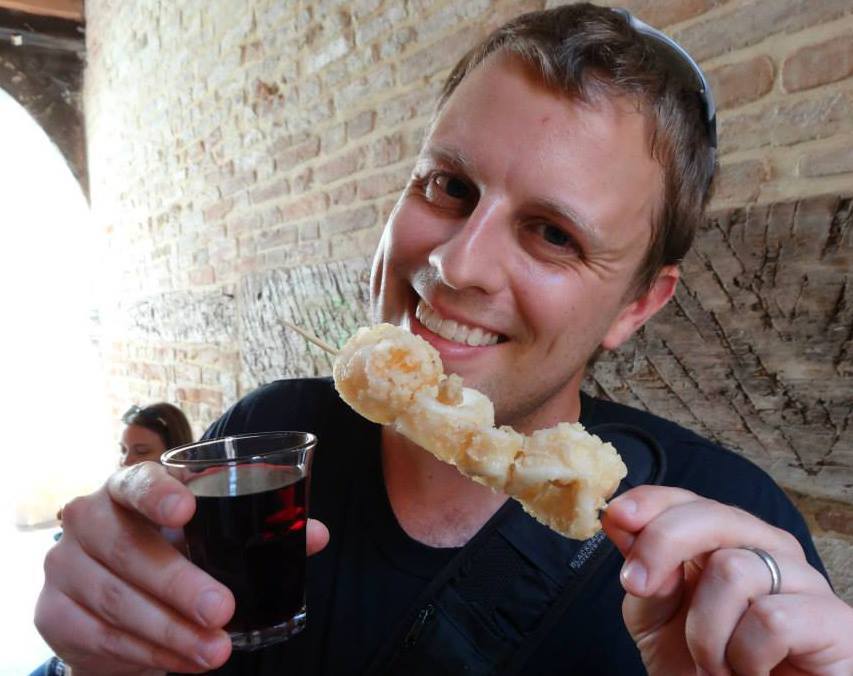
About the Author: Jeremy is a full-time travel writer based in Pittsburgh and primary author of this site. He has been to 70+ countries on five continents and seeks out new food, adventure activities, and off-the-beaten-path experiences wherever he travels.
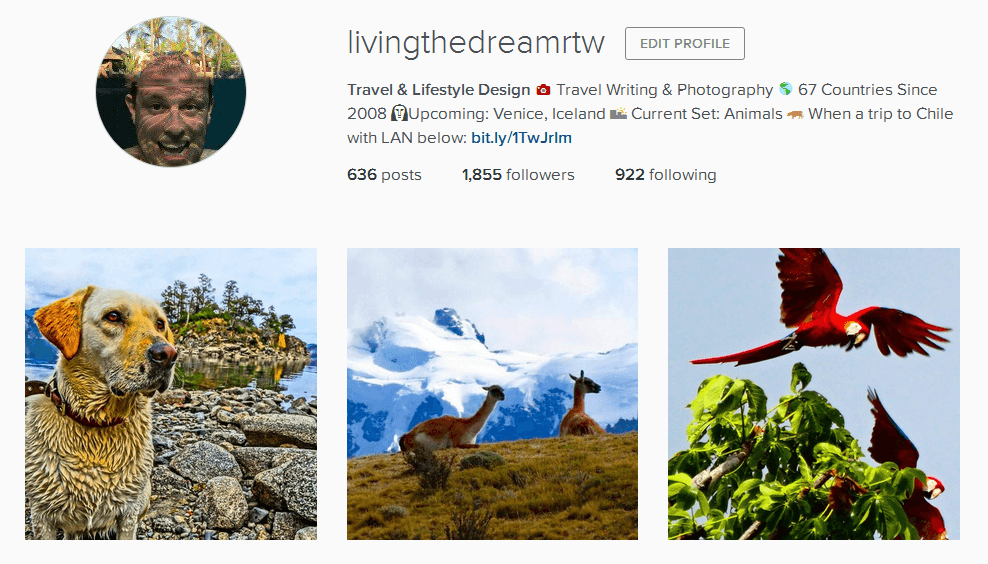

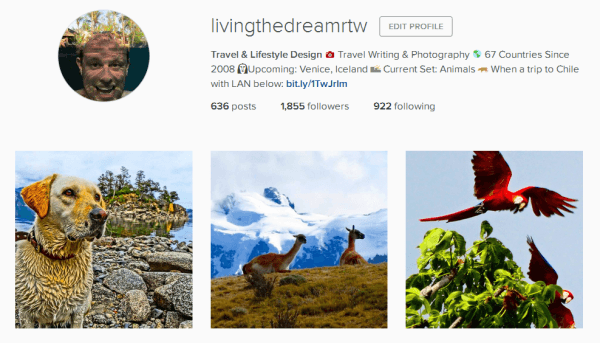
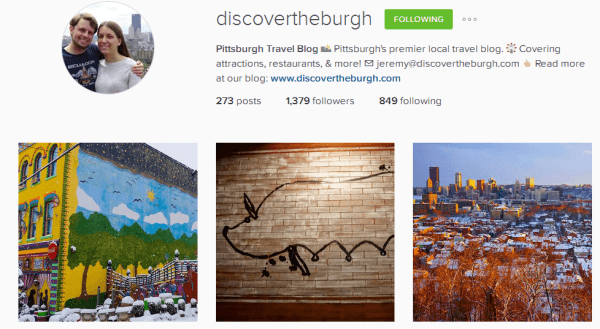
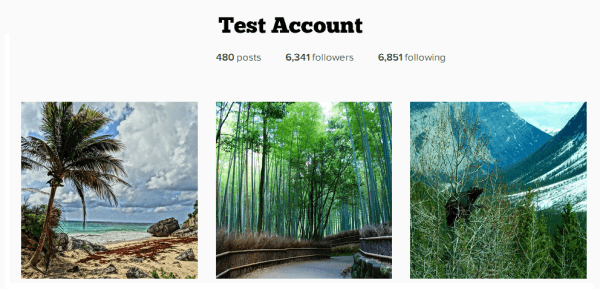
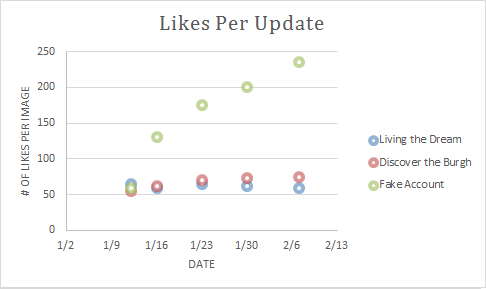
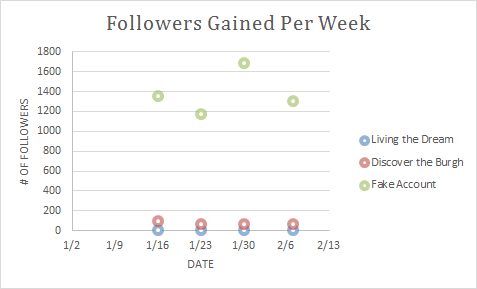

It’s interesting Jeremy, what are your thoughts on buying IG followers ?
I would place buying IG followers in one of the Top 3 dumbest ideas for the social network. Advertise to find real followers. Don’t buy them.
Just stumbled on this article great read! Just one big question – is it still applicable for today? (MARCH 2018) Yes I am from the future lol (sorry just finished watching DARK)
I think most of these tips would work just fine now. I know I’ve seen many bloggers do techniques like this with similar results.
Just stumbled across this – thanks for taking the time to conduct this experiment. I’ve been trying to grow my organically for the better half of this year with very little success. I know you’re not condoning the shady method of gaining Insta followers, but I might just give this experiment a go myself and see what impact it makes.
Jeremy, thank you for sharing the results with us. What an experiment! I noticed a drop in engagement, and it seems Instagram is becoming more and more tough to crack. I’ve recently started using a tool to just see which accounts that I follow have unfollowed me, and I unfollow them too. I do it only in batches of 10-20 or so, but at least I’ll have the big gap between number of people I follow and number of followers, lessened to some extent. We’ll see if that’ll make for any change.
I’m currently at 1500 and still not nailing it. But I’ll keep trying I’ve just followed you too, hope you won’t follow & immediately unfollow! (just kidding, I know it’s not your style..
So thanks again!
I would not be surprised if we come to see Instagram moving more towards a robust algorithm based system like Facebook has, and I can thoroughly expect organic engagement to drop for most users over time. Admittedly, if Instagram does that, it will benefit those with targeted and engaged audiences to begin with, and would probably make the results of our test that much better. On the Facebook side of things we had one account (this one) really drop with algorithm changes, but our local blog is going insane with posts often exceeding 100% organic reach. Again, its all about an engaged audience as a starting point!
As a passionate Instagram User, this follow-unfollow Game sucks so much. Especially with these automated Comments that are all over…
The funny thing with automated comments is that if you put the same comment in more than once, Instagram warns you that you’ve posted it before and may be spamming.
Wonderful analysis, thank you for the detailed write up. It proves that with the right tactics you can actually grow your accounts nicely if you put in some work. A friend of mine did something similar on twitter a while ago, also with the core of following, unfollowing as the major cause.
Sadly most of the idiots out there are spammers and not doing it properly – as you said, you stayed away from the really shady stuff and just used the system available. Good luck on the growth
Agreed! I do not think there is anything wrong with taking advantage of the rules of a social network and making it work to your advantage, but doing so often walks a fine line with unethical practices too (and people who are not paying attention blow right past that one without even noticing and end up becoming spammers).
It is also worth keeping in mind what you want out of your account in the long run too, because there may be some other unintended consequences not even covered here.
The part you didn’t mention, which I think is the most important technique (not just for Instagram, but for blogging and social media in general) is to PIMP YO’SELF!
Marketing. PR. Learn & practice it regularly. Sell yourself.
Have a jaw-dropping GoPro photo? Submit it to GoPro “photos of the day” on their website, as well as hashtagging and tagging all GoPro accounts when you post it on Instagram, Twitter, Facebook, etc. Find out who is the head of GoPro’s social media team, track down their email online, have a bit of small talk, then send them a pitch message. (I’ve been featured by GoPro three times now).
This is just one example — reach out to other big brands & tourism boards every week. Have extra free time? Do it every single day. It’s a lot of work, but these people have GIANT social footprints. Getting featured on their accounts can send you thousands of new fans.
Posting one photo per day isn’t going to do anything unless you actively & aggressively reach out and force your images onto a much, much larger audience.
If your photos aren’t that great, this won’t work (get better). If you get discouraged after nothing happens the first few times and give up, this won’t work (keep going).
MARKETING!!!! I can’t scream it enough.
Yes, I love it! I used the word post-pitching on Facebook when we were talking, but you correctly summarized it with marketing- something most bloggers are awful at but can learn to improve upon.
The best part is that I think there is room for both techniques because honestly, if you want your business to succeed in a digital world, you have to hit it from every single angle possible. Going after just one avenue of growth is like putting all your eggs in a basket, which is why I’m literally testing anything and everything to find what works for us. (And outside observers looking at this, this post is just one of MANY tests we’re working on and in no way is it the only thing you should or could do.)
I appreciate that our entire test here was about improving your brand’s reach so your future marketing will be better, yet your idea is circumventing your reach entirely and reaching out to others to help you get it for you (and thus grow your brand in the process).
This has given me an incredible amount of ideas just from this one comment, and now I wish I had that free time thing you mentioned to do it all.
Great insight here! It’s true that most people with huge followings don’t tell you everything about how they got there. I appreciate your honesty and taking the time to test this. Thanks for sharing!
Great case study and spot one. I wish you wouldn’t have posted it.
Haha, thanks! I think this one is going to be misinterpreted by several people, so I tried to make my stance as clear as possible to avoid it!
Very interesting post, thank you for sharing such a fact-based study! I am also having ‘problems’ growing my Instagram account (because I totally agree with you about the shady follow-unfollow tactics) and I am currently stuck at about 300 followers (3 months of posting 1 picture a day). But I’ll just be patient and build a loyal following instead of playing the game and hope I’ll get to the magic threshold eventually!
Very informative article, Jeremy! Although we don’t have an Instagram account yet, we are thinking of starting one, so the tips were very helpful. What I have never understood, though, is why some people constantly follow and unfollow people (the same on Twitter). What’s the benefit? Surely, the more people you follow the better for you as they might follow you back, but why unfollow them after a while?? This has always puzzled me. If you could explain this phenomenon to me please, I would be grateful
There are many apps out there that let you track who doesn’t follow you back so you can unfollow them. I suspect that the people who constantly churn (we see this all the time) use them and don’t pay attention to the fact that they’re literally following/unfollowing the same accounts over and over again. Their goal is to get visibility in hopes that they’re followed because a notification that you’ve received a new follower is one of the biggest there is. But you’re right, if you constantly do it to the same accounts, people are going to get pissed.
Thanks for sharing this! I actually made it to the end (phew…) and appreciate your insights. This puts advice given by people like Gary Arndt into a clearer light. Seriously: we can’t stand to follow accounts who have only shitty photos, constant selfies, or ‘inspirational travel quotes’. Even if it would help our account to grow much quicker.
I was trying to be concise but had a lot to say. Oops!
This is great and very informative! Just started following you on Instagram. I’m not even quite sure what to make of this, very interesting.
Some great tips here – I’ve been struggling to get my account over 2000 for some time. Thanks for the suggestions!
You did it again! Awesome study and the results sadly do not surprise me. And it still does not make me want to use the shady tactics. I did a similar study myself on my account and gained about 3,000 followers in a week (out of which about 2,000 unfollowed) and decided that kind of follow/unfollow tactic was not for me.
I feel the same way after doing the study. I think the follow trick is a one time deal to try and jump-start your account, so users have to be sure they have an incredible feed ready to go (and a base following/engagement) if they truly want to benefit. I don’t see anything wrong with following a large blast of users to try and get your account going, but when it comes to unfollowing and churning that there is an ethical problem that comes about.